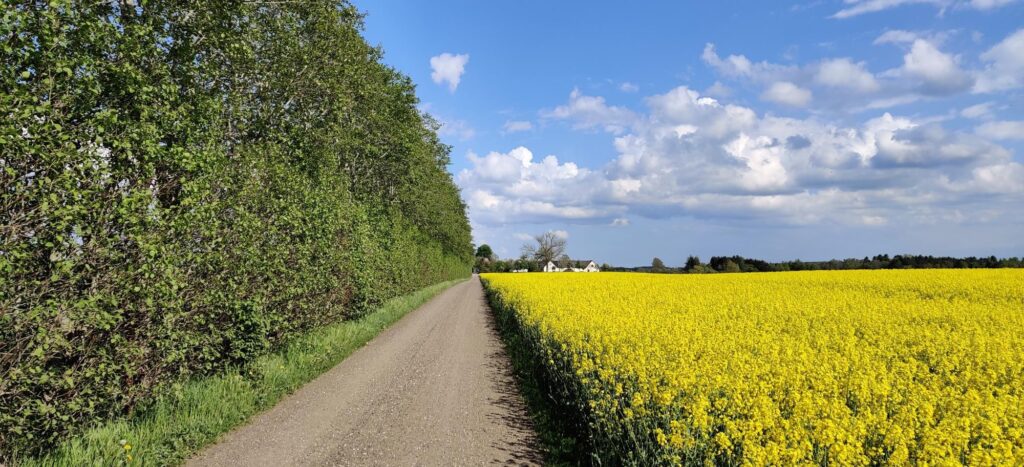
Cycling is more than just a mode of transportation; it’s a lifestyle, a sport, and an adventure. Whether you’re a road cyclist chasing the next Strava segment, a gravel grinder seeking rugged terrain, or an adventure cyclist exploring remote landscapes, mastering route planning is essential for an enjoyable and memorable journey. In this guide, we’ll explore the intricacies of route planning for road, gravel, and adventure cycling. And provide tips and insights to help you chart your course with confidence.
Road cycling route considerations
Start with a Purpose: Determine your goals for the ride—whether it’s a leisurely spin, a challenging climb, or a long-distance endurance ride.
Utilize Mapping Tools: Platforms like Strava, Ride with GPS, and Komoot offer route planning features tailored to road cycling. They allow you to customize routes based on distance, elevation and popular roads and segments.
Consider Traffic and Safety: Prioritize roads with low traffic volumes and smooth surfaces to enhance safety and enjoyment. If you can’t avoid traffic, consider roads with bike lanes.
Embrace Scenic Routes: Seek out picturesque landscapes, coastal roads, and mountain vistas to enhance the sensory experience of your ride.
Plan for Refueling: Research and mark locations for water refills, rest stops, and cafes along your route to stay hydrated and fueled for the ride.
Gravel route planning
Research Terrain: Gravel routes can vary significantly in surface conditions, from packed gravel roads to rough, rocky trails. Research the terrain to ensure your bike and skill level are suited to the conditions. Heatmaps are great for this, as easier roads will be more popular.
Invest in Appropriate Gear: Equip your bike with wider tires, robust wheels, and suitable gearing to handle the demands of gravel riding.
Explore Off-the-Beaten-Path: Gravel cycling opens up a world of exploration beyond paved roads. Look for gravel roads, forest trails, and country lanes that offer solitude and natural beauty.
Prepare for Variable Conditions: Weather and road conditions can change rapidly on gravel routes. Sections can stay wet and muddy for way longer in the forest. Pack essentials like spare tubes, a multi-tool.
Plan for Connectivity: Remote gravel routes may lack cellular coverage, so plan your route and navigation strategy accordingly. Consider downloading offline maps or carrying a physical map as a backup.
Route planning for adventure cycling
Embrace the Unknown: Adventure cycling is about embracing uncertainty and exploring new frontiers. Be open to detours, unexpected discoveries, and spontaneous adventures along the way.
Pack Light, Pack Smart: Balance the desire for comfort with the need to travel light. Pack essentials like camping gear, food, and water purification tools while minimizing unnecessary weight.
Look for routes online: Find routes from other people on RideWithGPS. Asking for inspiration on local facebook groups etc. can be a great source of information.
Seek Local Knowledge: Tap into local resources, such as bike shops, outdoor clubs, and online forums, to gather insights on hidden gems, road conditions, and safety tips for your adventure.
Plan for Self-Sufficiency: Adventure cycling often takes you far from civilization, so be prepared to handle mechanical issues, navigation challenges, and emergencies on your own. Develop basic bike repair skills and carry essential tools and supplies.
Leave No Trace: Respect the environment and communities you encounter along the way. Practice Leave No Trace principles by minimizing your impact. Dispose of waste properly, and respect wildlife and local customs.
Route planning tools
You should use a cycling specific route planning tool. It will allow to export the route in a specific format like .gpx. These files can imported into your headunit/cycling computer and navigate you along the route. Services like Strava can even sync your routes automatically.
We have a specific section going in-depth with the best route planning tools out there. A good free option is RideWithGPS. The easiest to use, and fastest to create routes with is Strava. It’s specially easy to find gravel sections with. It does however come with a monthly subscription. But you can sign up for a single month, create and export all the routes you want and cancel you subscription.
Conclusion
In conclusion, mastering route planning for cycling—whether on road, gravel, or adventure terrain—involves a combination of research, preparation, and adaptability. By considering factors such as terrain, safety, supplies, and local knowledge, cyclists can embark on journeys that are both exhilarating and rewarding. So, saddle up, plot your course, and let the adventure begin!



